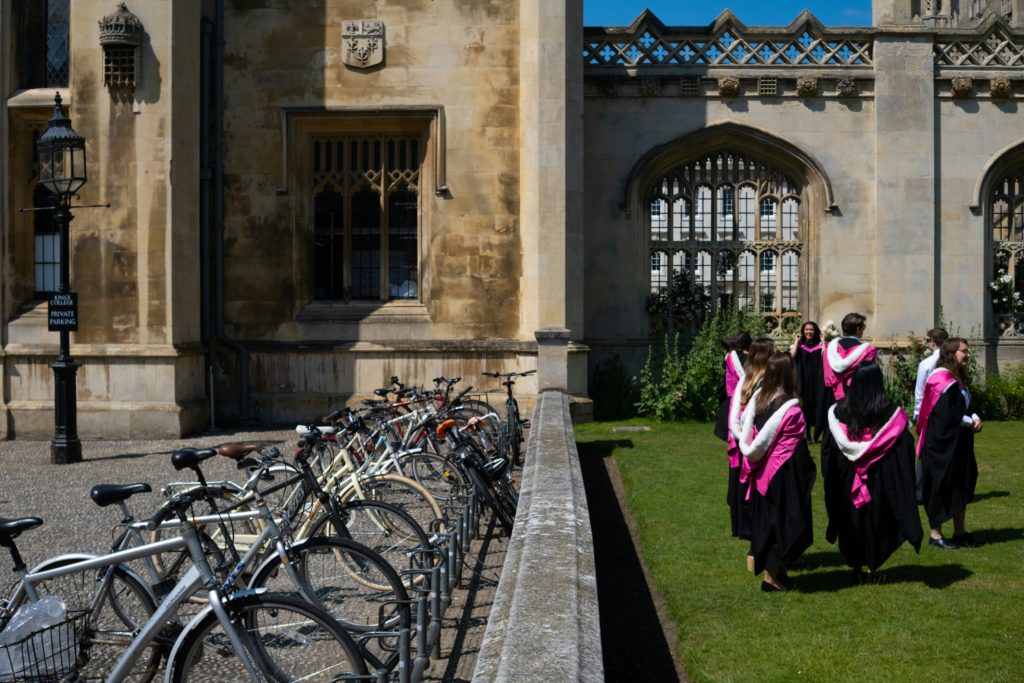Commercial Feature
Graduate Route changes from 2027: what Cambridge students need to know now

The rules are finally clear. From first January 2027, most international graduates who apply for the UK Graduate visa will receive 18 months, not two years. Doctoral graduates still receive three years. If you apply on or before 31 December 2026, you remain on the two-year version. The Home Office has written these timelines into its public guidance, which means current Cambridge cohorts can plan with real dates rather than rumours.
For many finalists and taught-masters students, the crucial point is simple. The date you apply governs how long you receive. You could finish in 2026 but drift into January 2027 and end up with 18 months. Equally, you could complete near the end of 2026, apply promptly, and still receive a full two years. Build your search, internships, and sponsorship strategy around that application date, not around your ceremony or a loose idea of “after graduation”.
Cambridge’s International Students office restates the familiar foundations: permission under the Graduate route lets you work or look for work in any sector, at any level, and without sponsorship. It is a springboard, not a destination, because you cannot extend it. To remain in the UK beyond the Graduate period, you switch into a sponsored route such as Skilled Worker once you have an eligible offer from a licensed employer.
What stays the same for 2025–26 graduates
If you are finishing in 2025 or 2026 and apply before the end of 2026, the structure you have heard about is intact.
- Length: two years for undergraduate and taught-postgraduate applicants who apply by 31 December 2026. Three years for PhD holders, unchanged.
- Work conditions: freedom to work or look for work at any skill level, including self-employment, within the normal restrictions of the route.
- The bridge, not the end state: there is no extension option. Plan to use the route to secure a sponsored role and then switch in-country.
Behind the headlines, usage has been mainstream and refusals very low. In the year ending March 2024, 139,175 Graduate visas were granted to main applicants; the rejection rate was about 0.6 percent. Those figures matter because they show the route functions largely as designed, even as its length changes for future applicants.
What changes in 2027
From 1 January 2027, applicants for the Graduate visa who are not completing a doctorate will receive an 18-month grant. Doctoral graduates keep three years. The change was trailed in government policy communications and has since been confirmed in the published rules and official pages.
Timelines and scenarios to make it concrete
- Finish an MPhil in September 2026 and apply in October 2026. Outcome: two years.
- Finish a BA in June 2026 but delay your application until 2 January 2027. Outcome: 18 months.
- Complete a PhD in 2026 or 2027 and apply at any point. Outcome: three years in either case.
Universities across the sector, including Cambridge and Bath, have updated their student-facing pages to reflect this timing logic and to underline that your application date is decisive. If you want the full two years, do not slip into the January 2027 window.
Key point: Treat the “apply by 31 December 2026” line as a hard stop if you need two full years. The clock starts from the day your application is approved, and the length you receive depends on your submission date.
How to use your 18–24 months well: internships, sponsorship and switching

Think of the Graduate route as runway. Whether you have 24 months or 18 months, your goal is the same: convert early UK experience into a sponsor-backed role that meets Skilled Worker criteria. That means learning the basics of sponsorship, being precise about salary thresholds, and pacing your search so you switch before your Graduate permission ends.
Months 0–3: foundations and visibility
Start with credibility signals that employers and HR teams recognise.
- Tighten your CV and LinkedIn to show outcomes, not tasks.
- Build a portfolio page for two or three projects with a short paragraph on impact. If your images are messy or oversized, quickly crop a photo and compress it before you upload.
- Use simple creative tools to create clean, on-brand assets for applications and outreach. Many students reach for Adobe Express for that reason.
Months 3–9: proofs of value
Generate evidence that reduces hiring risk for a sponsor.
- Aim for at least one measurable contribution each quarter: shipped code, a data dashboard adopted by a non-technical team, a pilot policy rolled out by a college or council partner.
- Seek short internships that include UK-based clients or users. These often lead to clearer references and sponsor-friendly responsibilities than ill-defined roles.
- Network deliberately with employers already on the sponsor register. It is easier for HR if the company already understands certificate issuance and compliance.
Months 6–12: learn the salary and role rules
Two numbers anchor most Skilled Worker conversations today.
- The usual Skilled Worker general threshold is £41,700 per year, or the job’s going rate if higher. This figure rose in 2025 and now frames many graduate offers.
- There are lower thresholds for specific circumstances. New entrants and roles on the Immigration Salary List can qualify at £33,400, provided other conditions are met. Do not assume the discount applies automatically; check the occupation code and going rate.
You will also see references to going-rates tables and to the higher skill requirement that came in during 2025, with most roles now needing to be at Regulated Qualifications Framework level 6 or above, unless they are on designated lists with different rules. Understanding this language helps you negotiate.
Months 12–18 (or 12–24): switching without drama
When an eligible offer lands, map the switch carefully.
- You cannot extend the Graduate visa. Instead, you apply in-country to switch once your sponsor issues a Certificate of Sponsorship and your salary and role meet the applicable rules.
- Keep a small dossier ready: passport, proof of completion, contracts, and clean digital copies of any supporting documents. If an employer asks for a profile picture or portfolio tile for internal systems, crop a photo once and keep a master file to avoid last-minute editing.
- Leave margin for processing. Your new permission starts when it is granted, so plan backwards from any travel or role start dates.
The numbers that matter, minus the noise
Policy changes sit in a wider context. The Graduate route itself is widely used and stable in operation. The latest sector summary drawn from Home Office data shows 139,175 Graduate visas granted in the year ending March 2024, with a refusal rate of around 0.6 percent. Meanwhile, Student visa grants fell slightly in the same period compared with the previous year, with large shifts in the mix by nationality and course level. These macro trends help explain why ministers adjusted the Graduate route length while leaving the route in place.
Separately, the Skilled Worker landscape has tightened. In July 2025, the general threshold rose to £41,700 and the skill level moved to graduate-level roles, with transitional protections for some existing workers and specific lists that permit lower thresholds. For new graduates, that means being precise about occupation codes, going rates, and any qualifying discounts. Precision beats hope in sponsor conversations.
Cambridge-specific pointers for 2026–27
Your strategy will be stronger if it reflects the rhythms of the collegiate university.
- Confirmations over ceremonies: you can apply once the University has confirmed successful completion to the Home Office. Do not wait for your graduation day. That timing can help you avoid sliding past 31 December 2026.
- Careers fairs and sponsor lists: ahead of fairs, check employer names against the public sponsor register. Prioritise teams that have recently sponsored in your field and come with a short pitch that shows how your projects map to their occupation codes.
- Budgeting: the Graduate application attracts a fee and the Immigration Health Surcharge. Figures change, so check GOV.UK when you are building your budget. Treat payments as part of your runway plan.
Key point: The Graduate route is a timed bridge. Use it to reduce a sponsor’s uncertainty, meet the relevant salary rule, and switch with weeks to spare rather than days.
Common mistakes to avoid
A few avoidable errors crop up year after year.
- Missing the deadline for two years: if you want two full years, apply before 31 December 2026. Build a checklist and pair up with a course-mate to hold each other to it.
- Assuming extensions exist: they do not. Plan your switch early and keep your documents tidy.
- Ignoring salary mechanics: do not wait until offer week to learn the difference between the general threshold, a going rate and the Immigration Salary List.
- Administrative clutter at the last minute: prepare standard files once. If a portal wants a square image, crop a photo to the requested aspect ratio and save it in a labelled folder.
- Waiting for a perfect job title: sponsorship focuses on occupation codes and salary, not branding. If the duties match and the numbers work, the title can be less important.
Final considerations
The calendar shift to 18 months from 2027 will concentrate minds, but it does not close the door on early-career international talent. The route remains open, its rules are now stable on public pages, and the switching pathways into sponsorship are well understood by employers who hire graduates routinely. Use dates and numbers to your advantage. Apply before the end of 2026 if you need two years. If you apply later, compress your cadence and build sponsor-ready evidence quickly. Learn the salary thresholds and occupation codes, target licensed employers, and keep a clean pack of documents to make switching smooth. If you get those basics right, the move from campus to sponsorship can still be measured in months, not stress.
This article is provided for general information only. It is not immigration advice. Always check the official guidance and consult a qualified adviser if you need personalised support.
 News / Cambridge students accused of ‘gleeful’ racist hate crime4 December 2025
News / Cambridge students accused of ‘gleeful’ racist hate crime4 December 2025 News / Churchill announces June Event in place of May Ball3 December 2025
News / Churchill announces June Event in place of May Ball3 December 2025 News / Cambridge cosies up to Reform UK30 November 2025
News / Cambridge cosies up to Reform UK30 November 2025 News / Uni redundancy consultation ‘falls short of legal duties’, unions say6 December 2025
News / Uni redundancy consultation ‘falls short of legal duties’, unions say6 December 2025 Comment / Don’t get lost in the Bermuda Triangle of job hunting 24 November 2025
Comment / Don’t get lost in the Bermuda Triangle of job hunting 24 November 2025




